Pilea Involucrata: Friendship Plant Care & Growing Guide
Written by Iris
Nov 10 2021
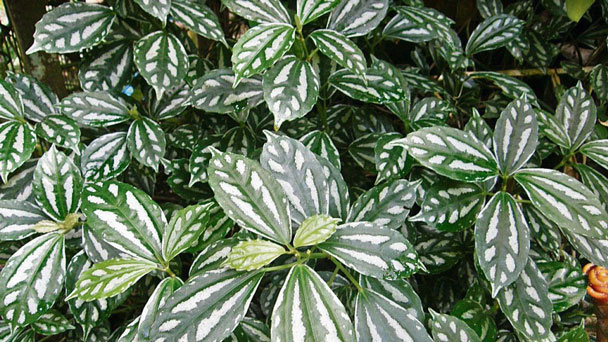
Pilea involucrata is better known as the friendship plant. Pilea Friendship Plant is named for its simplicity and speed of transmission. And, once you do, you'll have enough little plants to give to your friends. Pilea involucrata's compact size, aesthetic appearance and rapid growth ability also make it a popular houseplant. As a result, Pilea involucrata is easily available at most nurseries and garden centers.
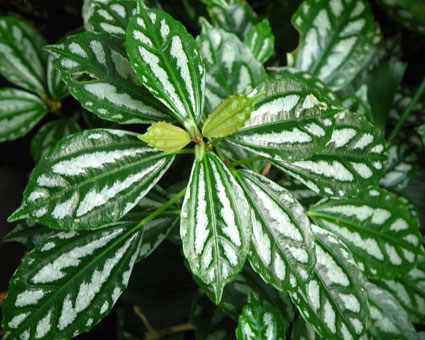
In other words, you will want a more specific pruning. Ideally, you need to select or cut: At least 4 inches long stems. You can make it longer if you want. The idea here is to make the stem long enough so that it can stand upright in the soil. Stems with at least 2-3 leaves. This ensures that the stem you choose is not a "useless". By choosing a leafy Friendship Plant stem, you know that it will be able to produce more leaves when planted on its own. Once you have selected the stem, you are ready to cut. Dip the stem end into the root hormone powder. This will speed up the rooting process. Put the stems in a new pot. Fill the rest of the pot, photograph it and put it in the soil. The goal here is to fill the pot with soil and provide stability to the stem. However, don't overpack it. If the media is packed too tightly, it will be difficult for air and water to penetrate the soil. Water soil. Put a plastic bag on the pots and plants. This will increase humidity. Put the pot in a medium light place. These roots will grow out in a few weeks to a month. (Find more Vine Plants Indoor here.)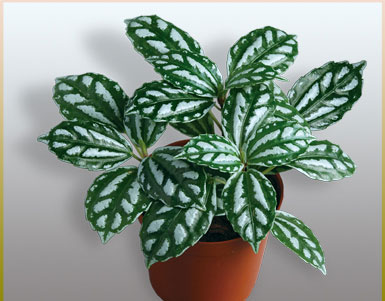
One place you don't want to put Pilea involucrata is in direct sunlight. These plants are like partial or semi-shaded areas. Also, leaving them in the direct path of sunlight for a few hours or at peak intensity will burn your hairy leaves.
Therefore, an east or north facing window is the best place for your Pilea involucrata. Instead, if you decide to choose a window that faces south or west, make sure your Friendship Plant is protected or away from the window itself. For the former, you can use curtains, drapes or curtains to filter sunlight through your Windows.
Like most other indoor plants, your Pilea Friendship Plant is watered more frequently during the growing season. During this time, once the potting soil dries a bit, you will want to water again. Depending on various factors, including weather, humidity, and the type of soil you use, this will mean watering once or twice a week. When you water Friendship Plant, be sure to water it thoroughly. Then, let the water drain from the hole in the bottom of the pot. This ensures moisture while eliminating risks
If you go out of this range, always remember that it will tolerate warmer better than cooler. As such, you can err on the side of higher temperatures. But, be careful about letting the mercury drop too far. At best, it will tolerate up to 55 degrees. But once you go under 50 degrees, you’ll start to see it experience some stress.
Thus, it is important to monitor your home thermostat during wintertime. And, avoid placing the plant is corners or area of your home are get colder. Similarly, keep it away from areas with drafts, be it cold or warm air. This includes heaters, air conditioners, windows and doors leading outside the home.
If you life in USDA zones 11 and 12, you'll be able to grow this tiny plant outdoors as well. This lets you put them in containers along with other plants in a mini garden. They're likewise amazing ground cover plants.
Besides temperature, the other environmental conditions you need to give your Pilea Friendship Plant is humidity. It likes moist air. Ideally, you want to keep it somewhere with relative humidity of 50% or higher.
And if this isn't available at home you can either mist it regularly, place it on a pebble tray or use a humidifier to remedy the situation.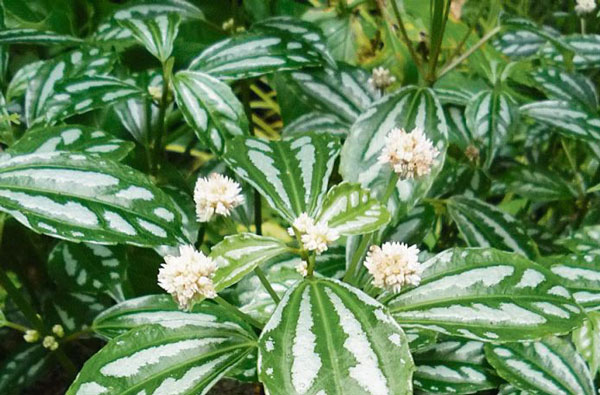
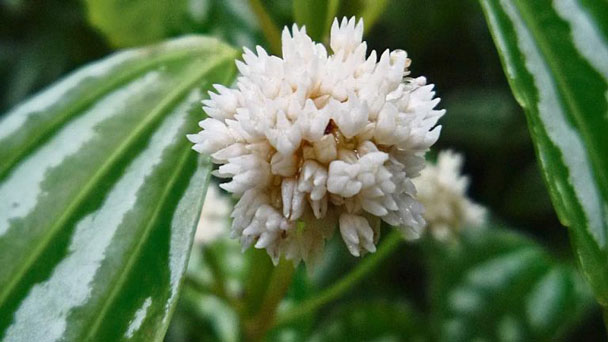
Read Next:
20 Popular Vine Plants Indoor To Grow
| Scientific Name | Pilea Involucrata |
| Common Name | Friendship Plant, Moon Valley Pilea, Pilea Friendship Plant |
| Origin | South and Central America |
| Light Requirements | bright, indirect light |
| Watering | Give the mix a thorough soaking |
| Soil | Use a rich and very well-draining medium. |
| Temperature | Between 65ºF (18ºC) to 75ºF (24ºC) |
| Fertilizer | Fertilize with a balanced blend |
How to Grow Pilea Friendship PlantFriendship Plant Propagation with DivisionsFriendship Plant Propagation with Stem CuttingsHow to Care for Pilea Friendship PlantFriendship Plant Light RequirementsFriendship Plant Soil CareFriendship Plant WateringFriendship Plant Temperature & Humidity CareFriendship Plant FertilizerFriendship Plant Pruning CareFriendship Plant Pests & Diseases CarePilea Friendship Plant Care FAQIs Pilea Friendship Plant Toxic?How Can I Fix My Leggy Pilea Involucrata?Why Is My Pilea Friendship Plant Drooping?Why Does My Pilea Involucrata Have Brown Leaves?How Big Does Pilea Friendship Plant Get?
How to Grow Pilea Friendship Plant
Friendship Plant Propagation with Divisions
Pilea Friendship Plant produce several basal offsets. When the offsets have a sufficient root system, they can be separated. If possible, water the Pilea involucrata offsets before the transplant shock. Transplant shock is a situation that the dry root systems are over-fingered. Take the pilea friendship plant out of its pot and place your fingers close to the nodal junction - soil may have to be removed for better access. Push the chosen offset downwards until you hear a snap. Separate the foliage and its root system away from the mother plant, mentally noting the high risk of damage. Transplant in the appropriate sized pot with a fresh batch of houseplant soil. Maintain evenly moist soil and situate it in a bright, indirect location away from any direct sunlight. After four weeks, treat it like a normal specimen, following the care tips above.
Friendship Plant Propagation with Stem Cuttings
If you plan on growing more of them, don’t discard the trimmings you made while pruning your Pilea involucrata. Use them to propagate the new Friendship Plant.In other words, you will want a more specific pruning. Ideally, you need to select or cut: At least 4 inches long stems. You can make it longer if you want. The idea here is to make the stem long enough so that it can stand upright in the soil. Stems with at least 2-3 leaves. This ensures that the stem you choose is not a "useless". By choosing a leafy Friendship Plant stem, you know that it will be able to produce more leaves when planted on its own. Once you have selected the stem, you are ready to cut. Dip the stem end into the root hormone powder. This will speed up the rooting process. Put the stems in a new pot. Fill the rest of the pot, photograph it and put it in the soil. The goal here is to fill the pot with soil and provide stability to the stem. However, don't overpack it. If the media is packed too tightly, it will be difficult for air and water to penetrate the soil. Water soil. Put a plastic bag on the pots and plants. This will increase humidity. Put the pot in a medium light place. These roots will grow out in a few weeks to a month. (Find more Vine Plants Indoor here.)

How to Care for Pilea Friendship Plant
Friendship Plant Light Requirements
In the moderate to bright light, pilea involucrata grow well. Pilea involucrata can also tolerant low light conditions as long as they can be exposed to a few hours of sunlight each day. Similarly, if you don't have a good place to access natural light indoors, you can also use fluorescent growth lamps. Pilea friendship plant doesn't bother with artificial lighting, and it works just fine.One place you don't want to put Pilea involucrata is in direct sunlight. These plants are like partial or semi-shaded areas. Also, leaving them in the direct path of sunlight for a few hours or at peak intensity will burn your hairy leaves.
Therefore, an east or north facing window is the best place for your Pilea involucrata. Instead, if you decide to choose a window that faces south or west, make sure your Friendship Plant is protected or away from the window itself. For the former, you can use curtains, drapes or curtains to filter sunlight through your Windows.
Friendship Plant Soil Care
Soil is equally simple. Here, you want to moisturize your pilea friendship Plant and choose well-drained soil. A high-quality potting mixture is very effective as it is rich in organic materials and drains well. African purple blends or peat/peat moss based blends are strongly recommended. Any of them will work just fine.Friendship Plant Watering
The reason for being a low-maintenance Pilea Friendship Plant is that it is easy to grow without a lot of work. Water is one thing that your Pilea involucrata is not too picky about. As long as you don't drink much water, Pilea Friendship Plant will be very happy. Letting it sit in the water for too long will cause the roots to rot. So, if you are unsure, use less water.Like most other indoor plants, your Pilea Friendship Plant is watered more frequently during the growing season. During this time, once the potting soil dries a bit, you will want to water again. Depending on various factors, including weather, humidity, and the type of soil you use, this will mean watering once or twice a week. When you water Friendship Plant, be sure to water it thoroughly. Then, let the water drain from the hole in the bottom of the pot. This ensures moisture while eliminating risks
Friendship Plant Temperature & Humidity Care
Pilea involucrata is tropical in nature. Thus, it enjoys warm, humid conditions. This is one of the features that make it a good indoor plant (as most homes have similar conditions). That said, the friendship plant does best when the temperature hovers between 65 and 75 degrees Fahrenheit.If you go out of this range, always remember that it will tolerate warmer better than cooler. As such, you can err on the side of higher temperatures. But, be careful about letting the mercury drop too far. At best, it will tolerate up to 55 degrees. But once you go under 50 degrees, you’ll start to see it experience some stress.
Thus, it is important to monitor your home thermostat during wintertime. And, avoid placing the plant is corners or area of your home are get colder. Similarly, keep it away from areas with drafts, be it cold or warm air. This includes heaters, air conditioners, windows and doors leading outside the home.
If you life in USDA zones 11 and 12, you'll be able to grow this tiny plant outdoors as well. This lets you put them in containers along with other plants in a mini garden. They're likewise amazing ground cover plants.
Besides temperature, the other environmental conditions you need to give your Pilea Friendship Plant is humidity. It likes moist air. Ideally, you want to keep it somewhere with relative humidity of 50% or higher.
And if this isn't available at home you can either mist it regularly, place it on a pebble tray or use a humidifier to remedy the situation.

Friendship Plant Fertilizer
Like watering, you also want to focus on spring and summer. This is when your Pilea involucrata is actively growing. During this period, feed with balanced liquid fertilizer diluted to half the strength once a month. Something with an NPK ratio of 10-10-10 will do well. In winter, you can stop fertilizing and let Pilea involucrata start to rest again before spring arrives.Friendship Plant Pruning Care
Pilea Friendship Plant is easy to grow. It is a creeping plant that grows in groups. Therefore, the shape of Friendship Plant may get out of control because they grow in different directions. Therefore, most of the trimming work will be used for appearance and size control purposes. If you plan to plant Pilea Friendship Plant in pots, this will mean keeping their shape fairly compact. The goal will be to manage the density of Pilea involucrata and prevent them from invading the space of other plants around it. In addition to aesthetics, pinching back your Pilea involucrata also encourages fresh new growth. As such, it helps make your plant look fuller and bushier.Friendship Plant Pests & Diseases Care
Due to its ease of care, Pilea involucrata is less susceptible to pests or diseases. Therefore, compared with other indoor plants, Pilea involucrata is not a problem in this sector. Few people say that Pilea involucrata still encounters pests like beetles and spider mites. In addition, leaf spot disease and stem rot may occur. Therefore, it is important for Pilea Friendship Plant to be thoroughly observed with other plants.
Pilea Friendship Plant Care FAQ
Is Pilea Friendship Plant Toxic?
More good news about your Friendship Pilea: it's not toxic to pets or children! Or to you, either, if you're inclined to partake.How Can I Fix My Leggy Pilea Involucrata?
Unfortunately, specimens become leggy, lose their lower leaves, and generally become bedraggled with age. The usual solution is simply to start a new Friendship Plant from cuttings or offsets. The species is so easy to propagate that growing these plantlets alongside their parent can create a perpetually youthful pot.Why Is My Pilea Friendship Plant Drooping?
The most common cause of a drooping Pilea involucrata is underwatering, but a plant with root rot can also droop in a similar way. Check the moisture status of the plant, and drainage of the pot and soil to distinguish between the two. Many causes of stress can also result in a Pilea involucrata drooping, including transplant shock, temperature stress, and severe overfertilizing.Why Does My Pilea Involucrata Have Brown Leaves?
Friendship Plant Brown leaves are often due to underwatering, but excess direct sunlight, or very low humidity will also cause brown leaves, particularly at the tips and edges of the leaves. It is normal for a few older leaves to turn brown and drop over time, but it the problem is affecting many leaves, or younger foliage, it is almost always the result of a problem with the care conditions.How Big Does Pilea Friendship Plant Get?
Pilea involucrata rarely grows more than 12 inches (30.5 cm) high. Most plants remain between 6-12 inches (15-30.5cm) in height and spread slowly over time.Read Next:
20 Popular Vine Plants Indoor To Grow
Latest Updated
- Benefits of Bugleweed - 7 Science-backed Health Benefits
- Bugleweed Dangers & Side Effects - Is It Poisonous?
- How to Plant Evergreen Trees - What You Should Know
- When to Plant Evergreens - Grow Guide for Evergreen Trees
- 12 Wonderful Evergreen Shrubs for Your Garden
- 12 Popular Evergreen Plants with Pictures for Beginners
- When And How To Prune A Lilac Bush Like a Pro
- How to Grow & Care for Lilac Vine (Hardenbergia Violacea)
- Japanese Lilac Tree (Syringa Reticulata) Care & Propagation Guide
- Shumard Oak Pros and Cons - What to Know
Popular Articles
- Winter maintenance of Antirrhinum Majus
- How to Grow Terminalia Mantaly Tree
- How to Grow and Care for Crossostephium Chinense
- How to grow Antirrhinum Majus in spring
- Peristeria Elata (Dove Orchid) Profile: Info & Care Guide
- Underwatered Snake Plant (Sansevieria Trifasciata) - Signs And How To Fix
- How to Care for Brazilian Jasmine Plant (Mandevilla Sanderi)
- How to Grow & Care for Graptopetalum Purple Delight in Summer
- Rosa Chinensis (China Rose): Plant Growing & Care Tips
- How to Care for Baby Sun Rose (Aptenia Cordifolia)